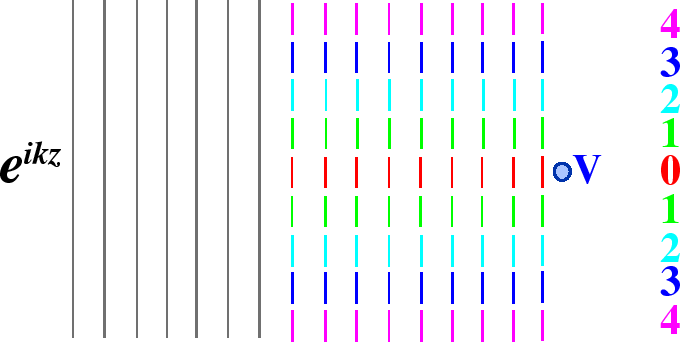Next: Scattering from a Spherical Up: The Radial Equation and Previous: Bound States in a Contents
In fact, an incoming plane wave along the ![]() direction can be expanded in Bessel functions.
direction can be expanded in Bessel functions.
 |
For large
![]() the Bessel function becomes
the Bessel function becomes


The scattering potential will modify the plane wave, particularly the outgoing part.
To maintain the outgoing flux equal to the incoming flux,
the most the scattering can do is change the relative phase of the incoming an outgoing waves.


The
 is called the phase shift for the partial wave of angular momentum
is called the phase shift for the partial wave of angular momentum
![]() .
We can compute the differential cross section for scattering
.
We can compute the differential cross section for scattering

 |
In fact, for low energy scattering and short range potentials, the first term
![]() is often enough
to solve the problem.
is often enough
to solve the problem.

Jim Branson 2013-04-22